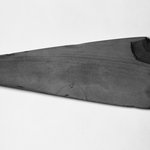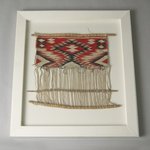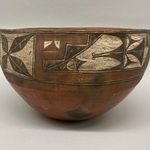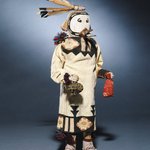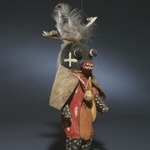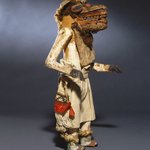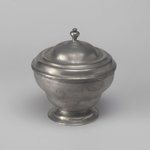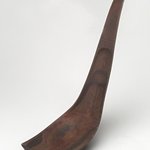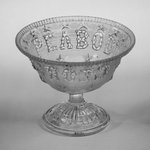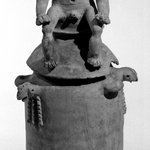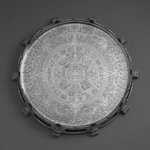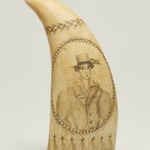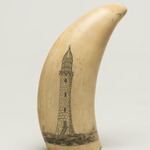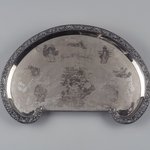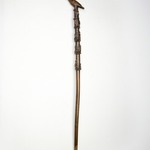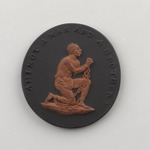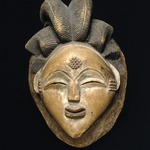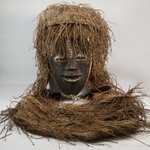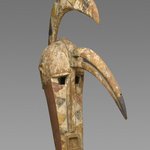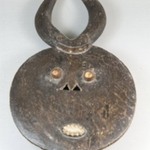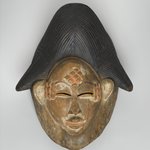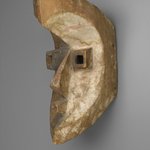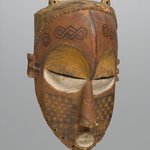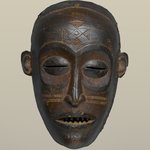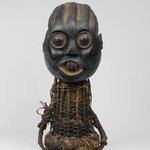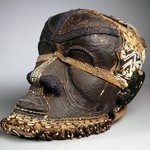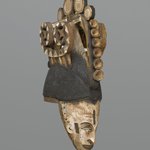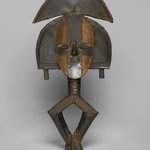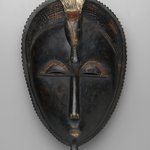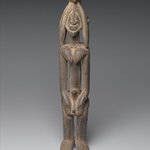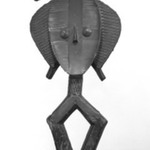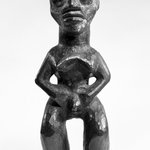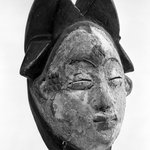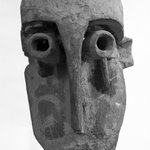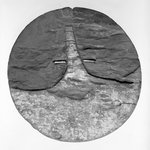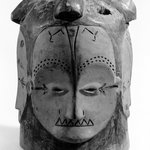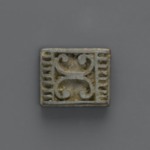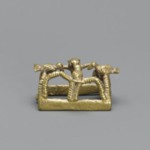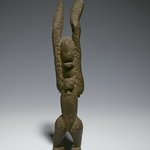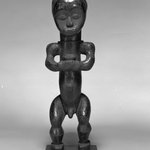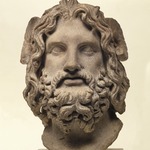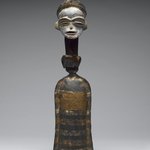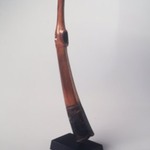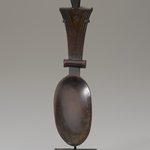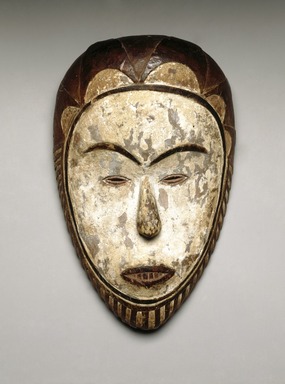
Face mask (ñgontang)
Arts of Africa
This Fang mask is called ñgontang. While the term means “face of the white woman,” ñgontang masks can depict either male or female spirits. Such masks emerged in response to the changing late nineteenth-century political climate in Africa. The kaolin may suggest white European skin, but it also recalls previous white masks that depicted wild, animal-like forces. Early in the colonial period, Westerners and supernatural beings were conflated with negative, disruptive spirits and linked to the color white. Viewing a ñgontang mask like this one transformed Picasso’s art in 1906. However, he was unaware that the mask he admired was a lookalike modern artwork made for sale to foreigners (see photo). In contrast, the Brooklyn Museum’s mask was used, likely in an effort by Fang owners to reclaim their society by controlling European colonizers’ spiritual power.
CULTURE
Fang (Betsi subgroup) artist
MEDIUM
Wood, kaolin, pigment
DATES
late 19th century
DIMENSIONS
11 1/8 x 7 x 2 1/4 in. (28.3 x 17.8 x 5.7 cm) (show scale)



COLLECTIONS
Arts of Africa
ACCESSION NUMBER
2011.4.6
CREDIT LINE
Collection of Beatrice Riese
CATALOGUE DESCRIPTION
Colored male face mask with carved coiffure, scalloped design above forehead, small pierced eyes, simple flat curved nose, and carved teeth. Much of white clay pigment has been abraded.
MUSEUM LOCATION
This item is not on view
CAPTION
Fang (Betsi subgroup) artist. Face mask (ñgontang), late 19th century. Wood, kaolin, pigment, 11 1/8 x 7 x 2 1/4 in. (28.3 x 17.8 x 5.7 cm). Brooklyn Museum, Collection of Beatrice Riese, 2011.4.6. Creative Commons-BY (Photo: Brooklyn Museum, 2011.4.6_SL1_edited.jpg)
IMAGE
overall, 2011.4.6_SL1_edited.jpg. Brooklyn Museum photograph
"CUR" at the beginning of an image file name means that the image was created by a curatorial staff member. These study images may be digital point-and-shoot photographs, when we don\'t yet have high-quality studio photography, or they may be scans of older negatives, slides, or photographic prints, providing historical documentation of the object.
RIGHTS STATEMENT
Creative Commons-BY
You may download and use Brooklyn Museum images of this three-dimensional work in accordance with a Creative Commons license. Fair use, as understood under the United States Copyright Act, may also apply.
Please include caption information from this page and credit the Brooklyn Museum. If you need a high resolution file, please fill out our online application form (charges apply).
For further information about copyright, we recommend resources at the United States Library of Congress, Cornell University, Copyright and Cultural Institutions: Guidelines for U.S. Libraries, Archives, and Museums, and Copyright Watch.
For more information about the Museum's rights project, including how rights types are assigned, please see our blog posts on copyright.
If you have any information regarding this work and rights to it, please contact copyright@brooklynmuseum.org.
RECORD COMPLETENESS
Not every record you will find here is complete. More information is available for some works than for others, and some entries have been updated more recently. Records are frequently reviewed and revised, and we welcome any additional information you might have.
